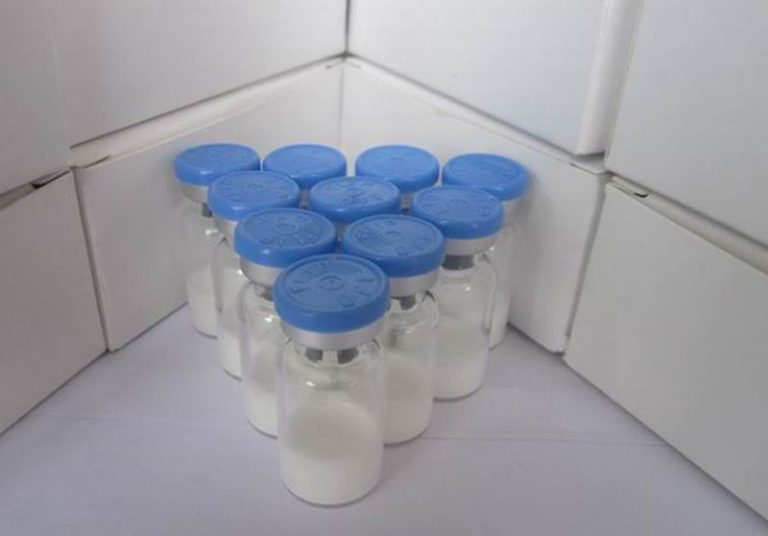Tamoxifen is a hormone therapy commonly hormone receptor-positive breast cancer.It is also used to lower your risk of invasive breast cancer and keep some breast cancers from coming back. It blocks growth of breast tissue that needs estrogen to grow. It can greatly reduce the risk of cancer recurrence (return) and invasive cancer. Some people take tamoxifen to lower the risk of developing breast cancer. The daily oral medication stops cancer cells from using estrogen and progesterone to grow and spread.The most common side effects are hot flashes, mood changes, vaginal discharge or bleeding, and nausea. Talk with your healthcare provider right away about any unusual vaginal bleeding, pelvic pain or pressure, or change in your monthly periods.
What is tamoxifen?
Tamoxifen (Nolvadex® or Soltamox®) is a drug that treats hormone receptor-positive (hormone-positive) breast cancer. (Hormone-positive breast cancer is a type of cancer that needs estrogen and/or progesterone to grow.) Healthcare providers also use tamoxifen to help prevent breast cancer in people over 35 who have a high risk of the disease. Since the U.S. Food and Drug Administration (FDA) approved tamoxifen in 1998, it has become one of the most widely used breast cancer treatments.
What is tamoxifen used for?
Tamoxifen can help people with hormone receptor-positive breast cancer. The drug can lower the risk of breast cancer in:
People who are high risk of breast cancer due to a family history of disease or mutated (changed) breast cancer (BRCA) genes. People who’ve already been diagnosed with breast cancer to prevent recurrence (return) of cancer. This includes development of breast cancer in the opposite, untreated breast and recurrence of breast cancer following surgery, chemotherapy or radiation therapy.
Your healthcare provider will talk with you about your medical history to determine if tamoxifen is right for you.
Why do breast cancer patients take tamoxifen?
Millions of people have used tamoxifen to prevent or treat breast cancer. The drug may lower the risk of:
- Breast cancer in the opposite breast by 50%.
- Breast cancer recurrence in premenopausal people by 30% to 50%.
- Breast cancer recurrence in postmenopausal people by 40% to 50%.
- Initial breast cancer diagnosis by up to 40%.
- Invasive breast cancer after the diagnosis of early-stage, noninvasive breast cancer (ductal carcinoma in situ or DCIS) by up to 50%.
tamoxifen side effect and risk
What are the most common side effects of tamoxifen?
The most common side effects of tamoxifen are listed below. Tell your healthcare provider if you have any of these side effects that bother you.
- Hot flashes
- Changes in mood
- Vaginal discharge or bleeding
- Nausea
- Fluid retention
There may be other side effects of tamoxifen that are not listed here. Contact your healthcare provider if you think you are having a side effect of a medicine.
What are the serious side effects of tamoxifen?
While less common, the most serious side effects of tamoxifen are described below, along with what to do if they happen.
Severe Allergic Reactions. Tamoxifen may cause allergic reactions, which can be serious. Stop taking tamoxifen and get help right away if you have any of the following symptoms of a serious allergic reaction.
- Breathing problems or wheezing
- Racing heart
- Fever or general ill feeling
- Swollen lymph nodes
- Swelling of the face, lips, mouth, tongue, or throat
- Trouble swallowing or throat tightness
- Itching, skin rash, or pale red bumps on the skin called hives
- Nausea or vomiting
- Dizziness, feeling lightheaded, or fainting
- Stomach cramps
- Joint pain
Uterine Cancer. You may be at higher risk for cancer of the uterus (womb) or cancer in the lining of your uterus (endometrial cancer) if you take or have taken tamoxifen. Call your healthcare provider right away if you have any abnormal vaginal bleeding, discharge, or pelvic pain or pressure.
Blood Clots. Tamoxifen may cause blood clots in your arteries or veins and could cause a stroke, heart attack, or venous thromboembolism, including a blood clot in the lungs (pulmonary embolism) or deep venous thrombosis (DVT). Stop taking tamoxifen and get emergency help if you have any of the following signs of blood clots.
- Chest pain or pressure
- Fast or abnormal heartbeat
- Trouble breathing
- Pain in your back, jaw, throat, or arm
- Sweating, upset stomach, vomiting, or dizziness
- Sudden weakness on one side of your body
- Sudden and severe headache
- Slurred speech or trouble understanding speech
- Pain, swelling, or tenderness in your arm or leg
- Vision loss
- Bulging eyes
- Double vision
Liver Damage. Liver damage, also called hepatotoxicity, and sometimes liver cancer can happen when taking tamoxifen. Call your healthcare provider right away if you have any of the following symptoms of liver damage.
- Nausea or vomiting
- Stomach or belly pain
- Fever
- Weakness or unusual tiredness
- Itching
- Loss of appetite
- Light-colored poop
- Dark-colored urine (pee)
- Your skin or the whites of your eyes turning yellowish in color (also called jaundice)
High Calcium Levels (Hypercalcemia). If you have breast cancer and it has spread to your bones, tamoxifen may cause high levels of calcium in your blood, which is known as hypercalcemia. Hypercalcemia can lead to serious problems with your kidneys, heart, or bones. Keep all healthcare appointments, including lab appointments to check your calcium levels, while taking tamoxifen.
Blood Disorders. Tamoxifen can cause low red blood cell levels (anemia), low white blood cell levels (leukopenia), or low platelet levels (thrombocytopenia). Keep all healthcare appointments, including lab appointments to check your blood cell levels, while taking tamoxifen.
Eye Problems. Tamoxifen can increase your chance of developing cataracts, needing cataract surgery, or other eye problems. Tell your healthcare provider if you notice eye symptoms, changes in your vision, or if things start to seem blurry.
Warnings & Precautions
Who should not use tamoxifen?
Allergies to Ingredients. People who are allergic to any of the following should not take tamoxifen.
- Tamoxifen
- Soltamox
- Nolvadex
- Any of the ingredients in the specific product dispensed
Your pharmacist can tell you all of the ingredients in the specific tamoxifen products they stock.
Ductal Carcinoma in Situ (DCIS). If you have cancer in your milk ducts and either need to take warfarin or have had a blood clot in your veins or in your lungs, you should not take tamoxifen.
High Risk of Breast Cancer. If you have a higher than usual risk of developing breast cancer and either need to take warfarin or have had a blood clot in your veins or in your lungs, you should not take tamoxifen.
What should I know about tamoxifen before using it?
Do not take tamoxifen unless it has been prescribed to you by a healthcare provider. Take it as prescribed.
Do not share tamoxifen with other people, even if they have the same condition as you. It may harm them.
Get regular pelvic exams (female exams), breast exams, and mammograms (x-ray to look closely at breast tissue) while taking tamoxifen.
Keep tamoxifen out of the reach of children.
If you take liquid tamoxifen, use the dosing cup that is provided with it to measure your doses. Once the bottle has been opened it is only good for three months. Write the date on the bottle the day you open it to help you keep track of this. Throw away any tamoxifen that is left in the bottle after 3 months.
Do not cut, chew, or break tamoxifen tablets. They should be swallowed whole.
You should perform monthly self-breast exams and have regular pelvic exams (female exam), breast exams (done by a healthcare provider) and mammograms (x-ray to look closely at breast tissue) before taking tamoxifen and during treatment with it.
What should I tell my healthcare provider before using tamoxifen?
Tell your healthcare provider about all of your health conditions and any prescription or over-the-counter (OTC) medicines, vitamins/minerals, herbal products, and other supplements you are taking. This will help them determine if tamoxifen is right for you.
In particular, make sure that you discuss any of the following.
Other Medicines and Supplements. Tamoxifen may interact with other medicines and supplements. Before taking tamoxifen, tell your healthcare provider about any prescription or over-the-counter (OTC) medicines, vitamins/minerals, herbal products, and other supplements you are taking. See the Interactions section for more details.
Current and Past Health Conditions. Tell your healthcare provider if you have any of the following.
- No period, irregular periods, or unusual vaginal bleeding
- Uterus problems, including cancer
- Blood clots in your veins or lungs
- Stroke
Pregnancy. You should use effective birth control while taking tamoxifen. Your healthcare provider may check to make sure you are not pregnant before you start taking tamoxifen. Tamoxifen may cause harm to an unborn baby. Tell your healthcare provider if you are or plan to become pregnant.
Breastfeeding. It is not known if tamoxifen passes into breast milk. Tell your healthcare provider if you are breastfeeding or plan to breastfeed. Your healthcare provider will advise you if you should stop breastfeeding or stop tamoxifen.
How does tamoxifen work (mechanism of action)?
Tamoxifen acts like estrogen in some tissues and blocks estrogen activity in other tissues. It binds to estrogen receptors blocking growth of ER-positive breast tissue.
How is tamoxifen supplied (dosage forms)?
Brands and other names
- Nolvadex
- Soltamox
Dosage forms and strengths
20 mg/10 mL oral solution 10 mg, 20 mg oral tablets
How should I store tamoxifen?
Oral Tablets. Tamoxifen tablets should be stored at room temperature, between 68 F to 77 F (20 C to 25 C). It can be exposed to temperatures between 59 F to 86 F (15 C to 30 C) for shorter periods of time, such as when transporting it. Store in a cool, dry place.
Oral Solution. Liquid tamoxifen should be stored in the original container to protect it from light, at room temperature, between 68 F to 77 F (20 C to 25 C). It can be exposed to temperatures between 59 F to 86 F (15 C to 30 C) for shorter periods of time, such as when transporting it. Store in a cool, dry place. It should not be stored in the refrigerator or the freezer.
Reviews
All customer say it good!
Additional Common Questions
Is tamoxifen worth the risk?
Often, the benefits of taking tamoxifen outweigh the risks. But it depends on your specific situation. While the drug can successfully prevent breast cancer for many, it can also increase the risk of stroke, uterine cancer or blood clotting issues in others.
One research study tested the risks vs. benefits of tamoxifen in a group of 788 women (people assigned female at birth). All of the participants were on tamoxifen and none of them had a history of breast cancer. The study found that the benefits of tamoxifen outweighed the risks for 74% of their participants, but not for 20% of their participants.
During a consultation, a healthcare provider will discuss your medical history in detail. To determine if this type of therapy is right for you, your provider will take the following into consideration:
- Age.
- Race.
- Breast cancer risk.
- Risk for tamoxifen adverse effects (stroke, cataracts, uterine cancer, etc.).
Is it safe to take tamoxifen during pregnancy?
Tamoxifen may cause birth defects. You shouldn’t take the medication if you’re pregnant or planning to become pregnant. To prevent pregnancy, talk to your healthcare provider about nonhormonal birth control options. (Hormonal contraceptives can fuel the growth of hormone-positive breast cancer.) You’ll need to use contraception while taking tamoxifen and for two months after you stop the medication.
Is tamoxifen chemotherapy?
No, tamoxifen is a type of hormonal therapy. It belongs to a class of drugs called selective estrogen receptor modulators (SERMs).
Sometimes, healthcare providers refer to tamoxifen as “chemoprevention.” But usually, chemoprevention drugs aren’t the same as chemotherapy drugs.
Do tamoxifen side effects start immediately?
While it depends on the person, many individuals report side effects as soon as the first dose.
What things should I avoid while I’m taking tamoxifen?
Certain foods and beverages can make tamoxifen less effective, including:
- Grapefruit.
- Tangerines.
- Beverages containing alcohol.
If you’re taking tamoxifen, you should avoid the foods and beverages listed above.
Does tamoxifen interact with other medicines (drug interactions)?
Always tell your healthcare provider about any prescription or over-the-counter (OTC) medicines, vitamins/minerals, herbal products, and other supplements you are taking.
In particular, make sure that you discuss if you are taking any of the following before taking tamoxifen.
- Warfarin, which is a blood thinner
- Anastrozole (Arimidex) or letrozole (Femara), which is a medicine used to treat breast cancer
- Rifampin, which is a medicine commonly used to treat an infection called tuberculosis
Some other medicines may alter the blood levels of tamoxifen. Tell your healthcare provider about all medicines that you take or have recently taken.
How long does tamoxifen stay in your body after stopping?
Tamoxifen stays active for up to two weeks after your last dose. However, it can take about three months to flush out of your system completely.
A note from Cleveland Clinic
Tamoxifen is a highly effective breast cancer treatment. It may significantly lower your risk of breast cancer recurrence or invasive breast cancer. People who are at high risk for breast cancer may take tamoxifen to reduce their chances of getting the disease. Your healthcare provider can discuss whether tamoxifen or another form of hormone therapy is right for you.






